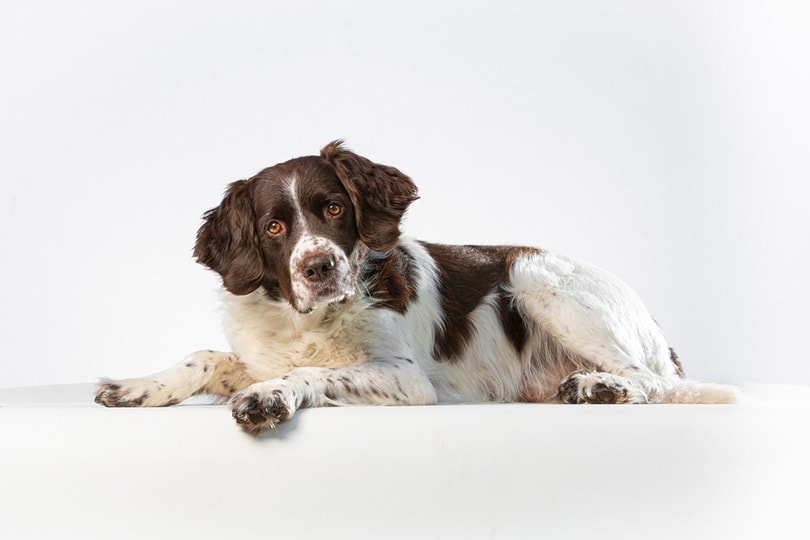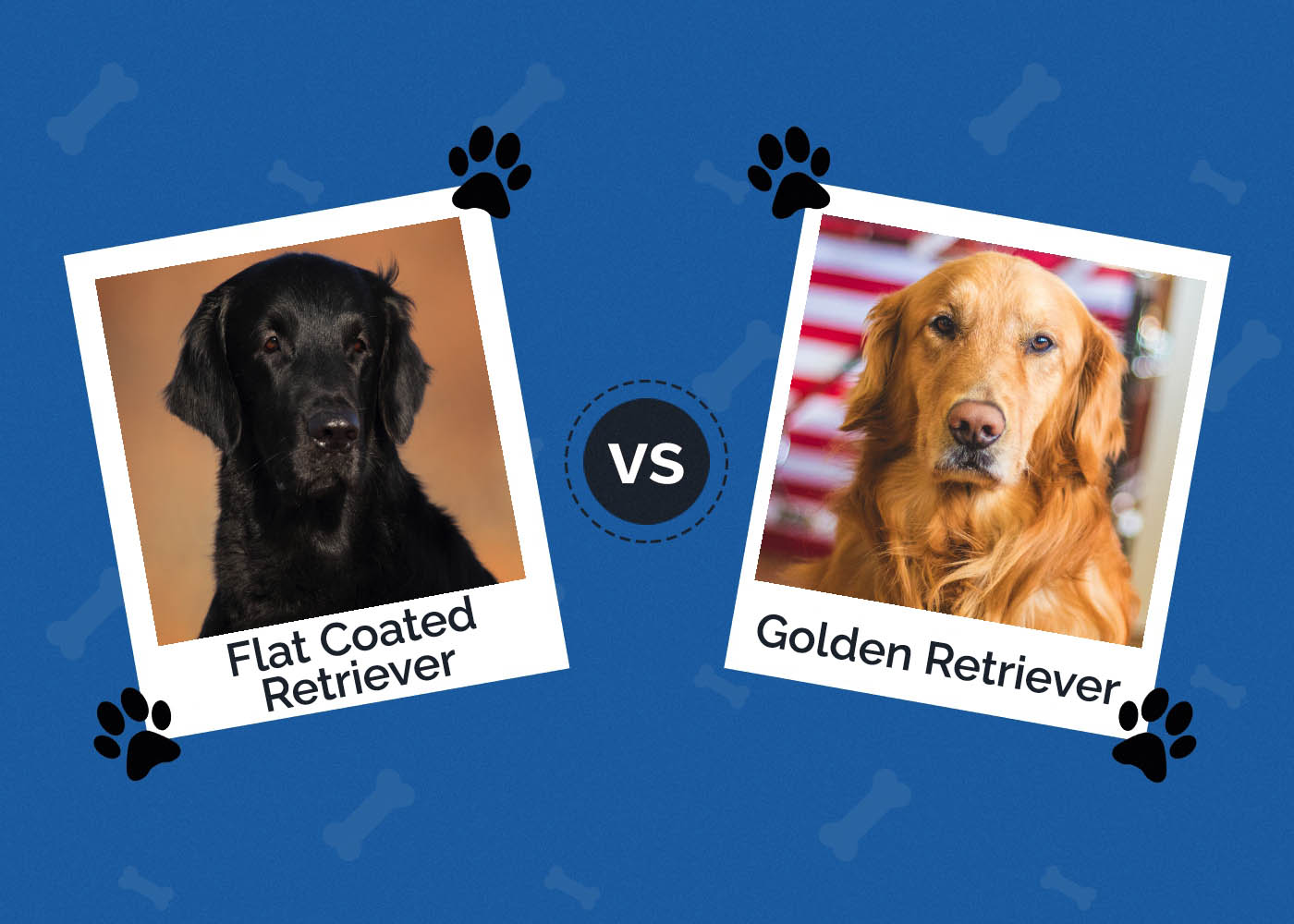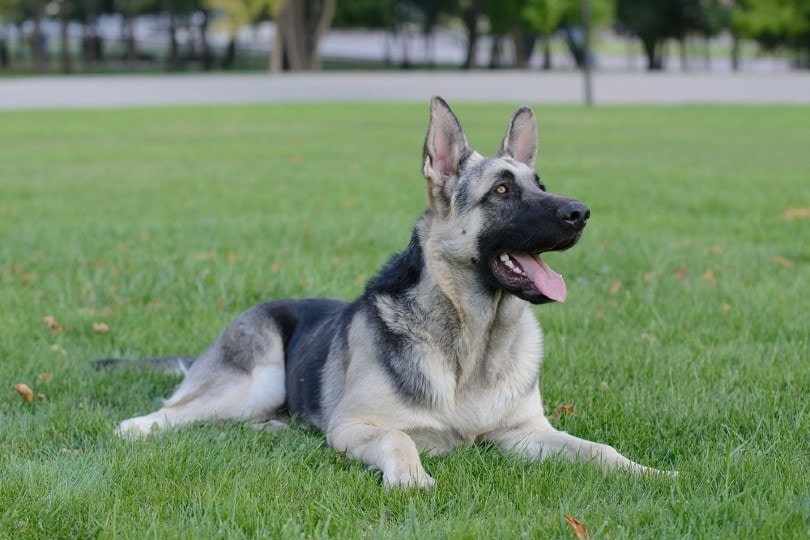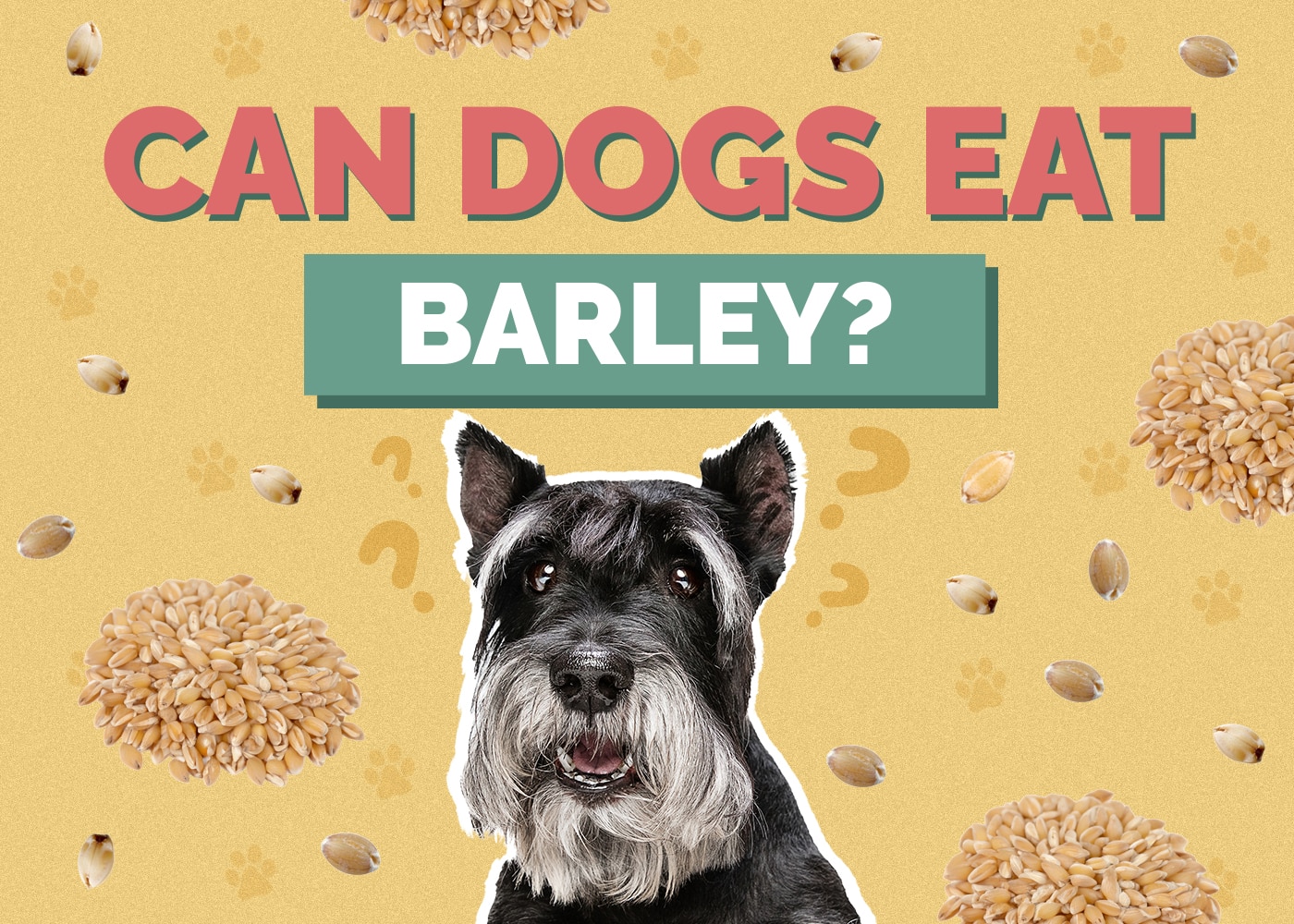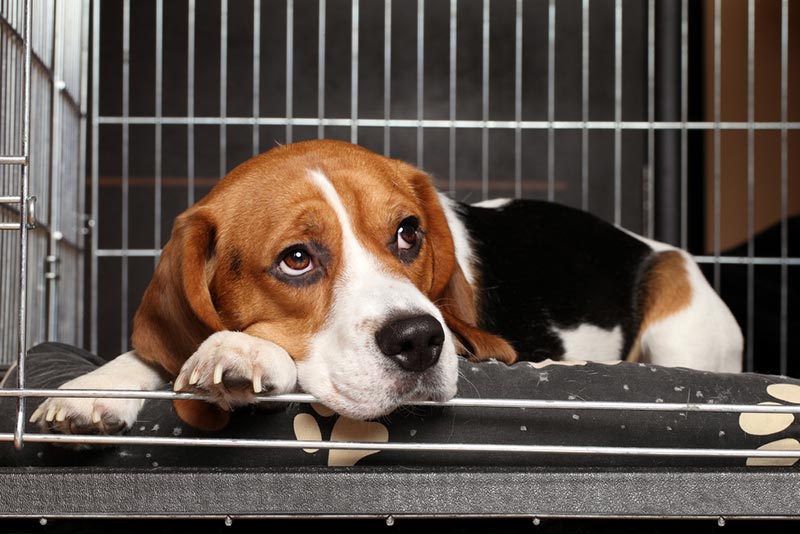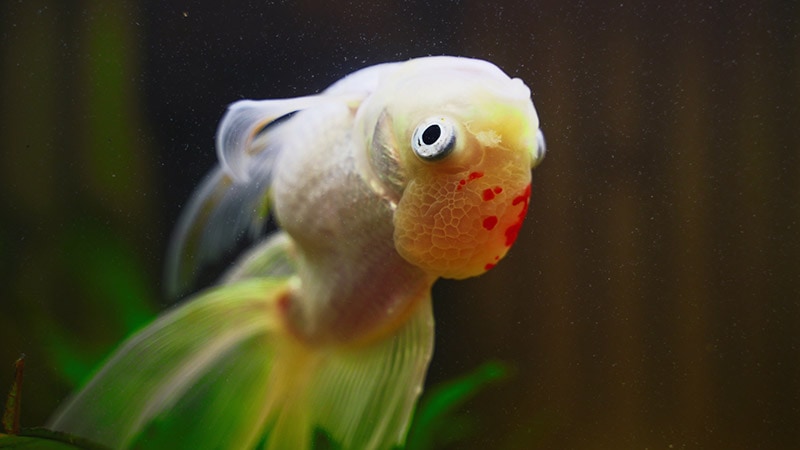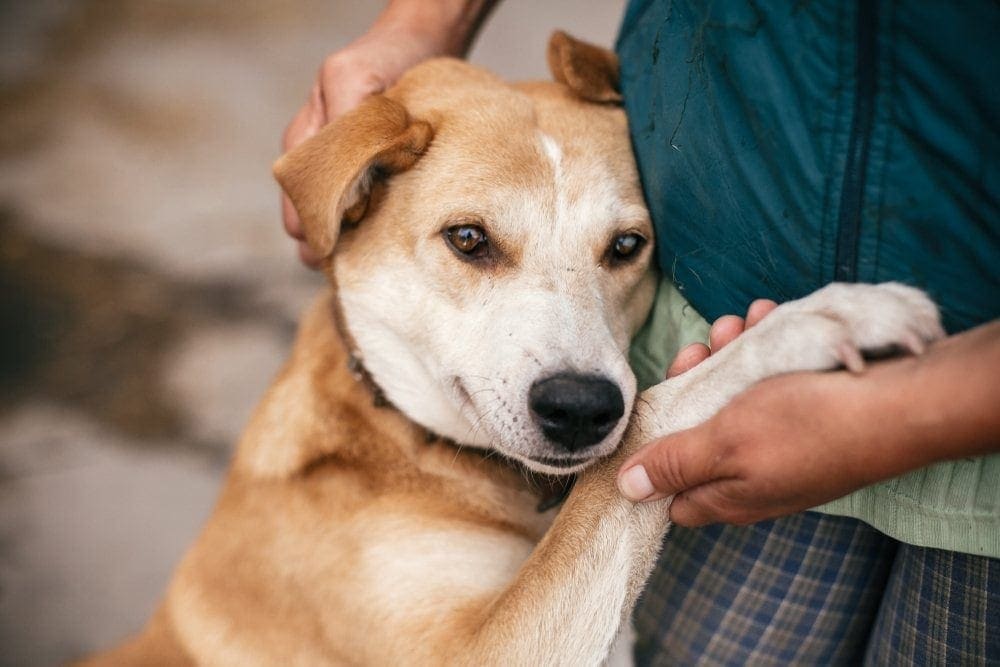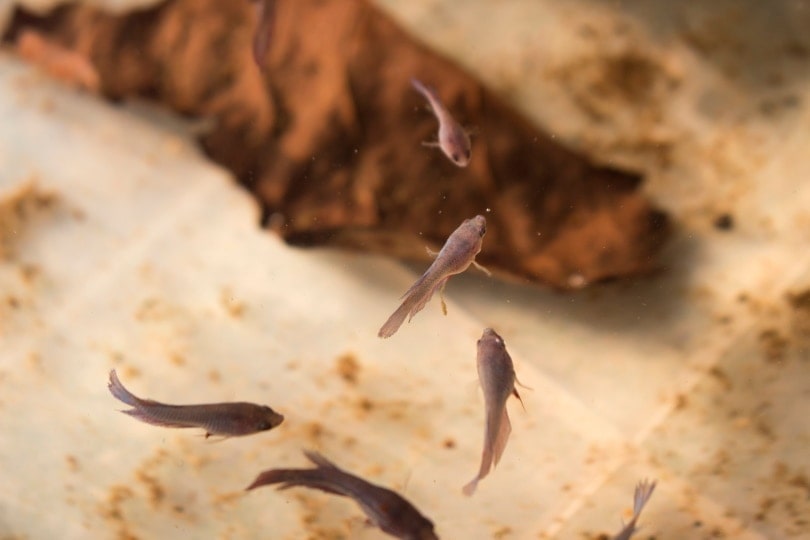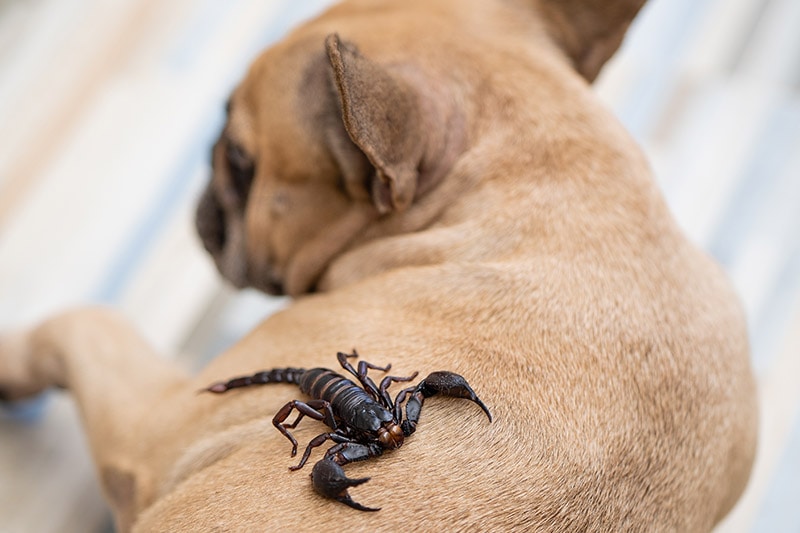Great Dobernees (Great Pyrenees & Doberman Mix): Info, Pictures, Characteristics & Facts

Updated on
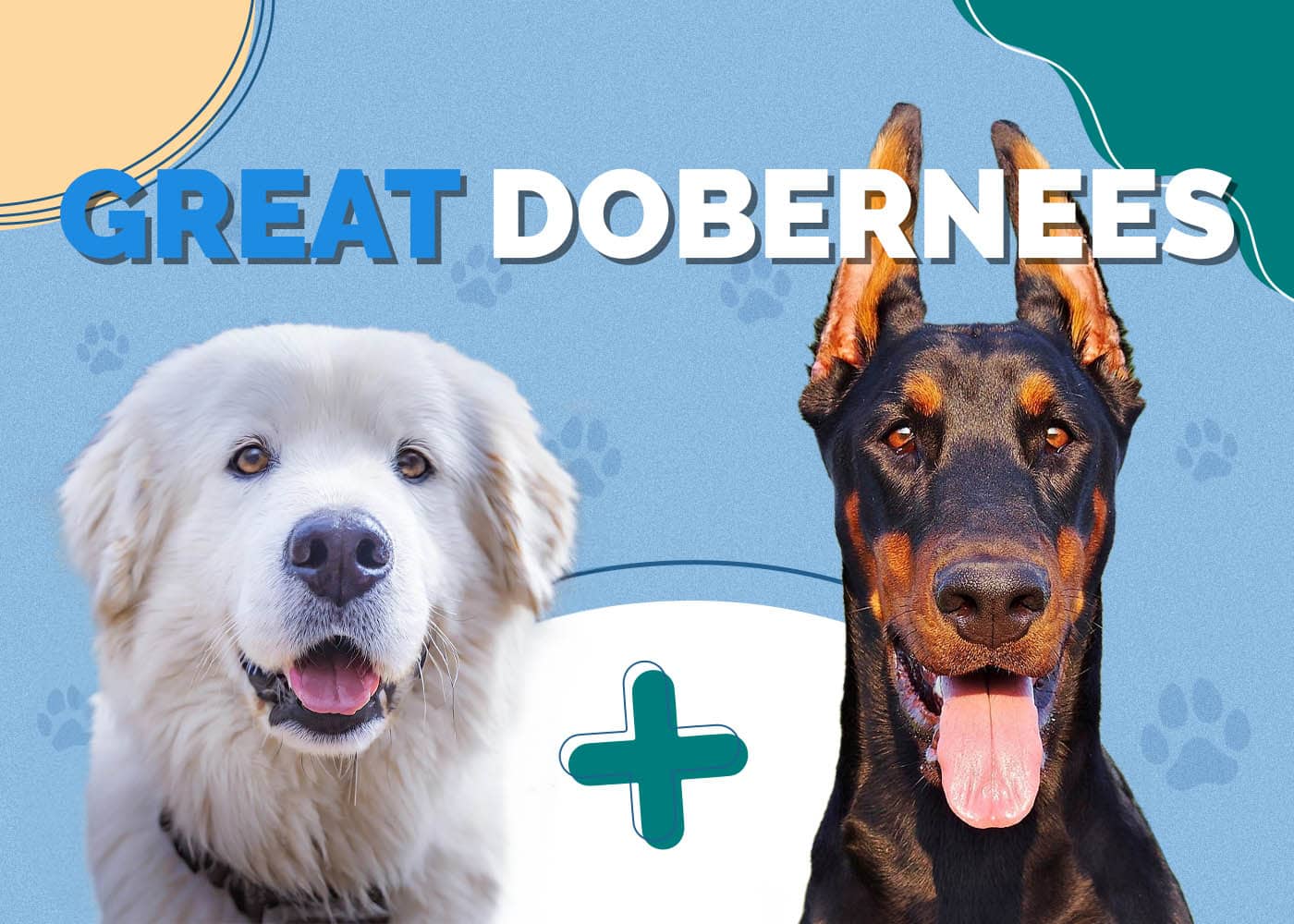
Height:
24-33 inches
Weight:
88-120 pounds
Lifespan:
9 to 12 years
Colors:
White, cream, black, fawn, blue, rust
Suitable for:
Families, singles, farmers, general working dogs
Temperament:
Alert, affectionate, courageous, energetic, intelligent, loyal, lively
The Great Dobernees is a rare hybrid breed, a cross between the Great Pyrenees and the Doberman Pinscher. While mixed-breed dogs can vary widely in both appearance and size, you should be prepared for a large animal that can reach weights of up to 120 pounds. Personality and temperament can vary widely, but the Great Pyrenees is an expert guard dog with their intimidating size and protective, loyal character. Let’s take a quick look at the parent breeds of the Great Dobernees to get a better idea of what to expect from this massive hybrid.
The Great Pyrenees, also known as the Pyrenean Mountain Dog, is a large, powerful working dog that was bred to protect livestock from predators. While still used as working animals today, the Great Pyrenees has become a popular family pet known for its loyalty and calm nature.
The Doberman Pinscher is an instantly recognizable breed from Germany that was originally bred as a guard dog but is commonly used for police and military work too. These dogs have a reputation of being fierce and aggressive animals, and while they are formidable protectors and guardians, they are also gentle, loyal dogs that make great family companions with the correct training and socialization.
The Great Dobernees is an exceedingly rare breed, and very few are purposefully bred. If the Great Dobernees sounds like the right breed for you, read on below for a more in-depth look at this regal and loyal pooch.
 Great Dobernees Puppies
Great Dobernees Puppies
Before committing to bringing home a Great Dobernees puppy, you should know that these are immensely large, powerful, and energetic dogs that will require a massive chunk of your time and attention. They will require a regular exercise regimen and intensive training to keep them happy and healthy and out of trouble. They usually have a short to medium-length coat but can be seen with fluffy coats like their Pyrenees parents and come in a variety of colors.
3 Little-Known Facts About the Great Dobernees
1. The Great Pyrenees is an ancient breed.
Many breeders believe that the Great Pyrenees originally came from central Asia and followed migrating tribes into Europe. There have been remains found of the Pyrenees breed that dates back to the Bronze Age (1800-1000 B.C.), making this one of the oldest breeds around. The breed is thought to have most likely evolved from mostly white mountain dogs that originated 10,000-11,000 years ago in Asia, and in the relative isolation of the Pyrenees mountains, the breed developed into the dog we see today.
2. The Doberman Pinscher is a fairly new breed.
The Doberman Pinscher is such a well-known, recognizable, and popular dog that it seems as though the breed has been around for centuries. In fact, the Doberman only originated in Germany in the late 1800s, developed by a tax collector named Karl Louis Doberman, who wanted to create a breed that would protect him during his often risky job.
3. There are several different breeds credited with the creation of the Doberman.
While Karl Doberman did not keep accurate records of his breeding process, several breeds are thought to be involved in the creation of the Doberman Pinscher, including the Rottweiler, Weimaraner, Great Dane, Greyhound, and possibly some Terrier breeds.
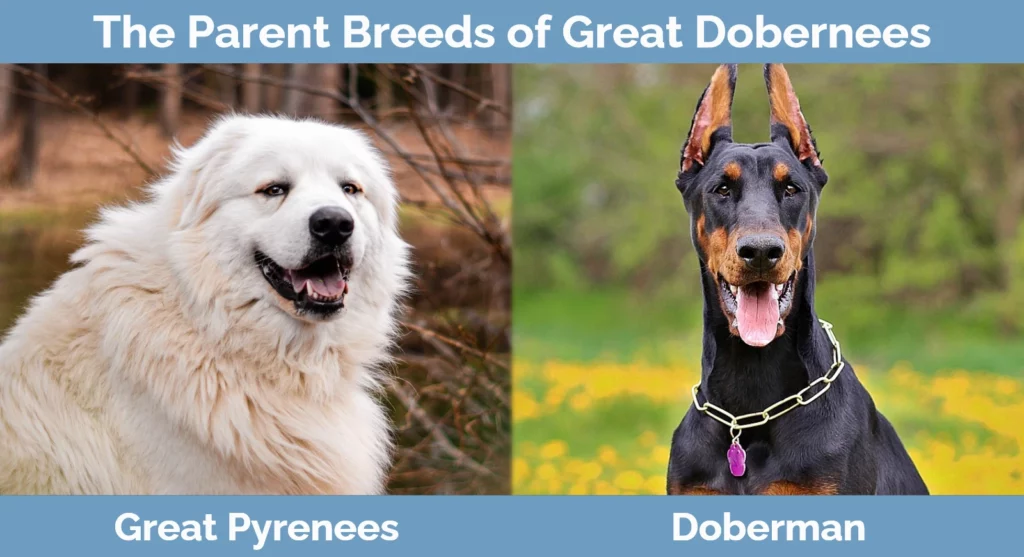
Temperament & Intelligence of the Great Dobernees 🧠
The Great Dobernees is a very new and very rare hybrid breed, so the temperament and personality of this breed are best gauged by the parent breeds. Hybrid breeds can vary widely between the different parents that they inherit their genetics from; however, there are a few vital characteristics in which the Doberman and Great Pyrenees cross over.
The Great Dobernees is a loyal and fiercely protective dog that while they will protect their family with their life, they are rarely aggressive and would rather walk away from intimidation than fight. Both parent breeds are also confident, courageous, and almost fearless, traits that seem to create a dog that is somewhat of a loose cannon. But the Great Pyrenees brings their seemingly endless patience to the table with a protective yet calm and patient nature, especially when it comes to kids.
Are These Dogs Good for Families? 🏡
The Great Dobernees is a great family pet, so long as they are socialized early and well trained. They are extremely loyal, brave, and protective animals that make ideal guard dogs. They have a strong patient character due to their Pyrenees heritage and are great with children, making calm, gentle, and friendly playmates that are rarely aggressive: These dogs will walk away when overwhelmed rather than act out aggressively.
Does This Breed Get Along With Other Pets? 🐶 😽
With good training and early socialization, the Great Dobernees will get along great with other dogs and actually enjoy and benefit greatly from having a playmate around the home. The Pyrenees has centuries of herding instincts embedded into its genes, though, so smaller dogs and cats may be seen as objects to be rounded up and looked after.
 Things to Know When Owning a Great Dobernees
Things to Know When Owning a Great Dobernees
Food & Diet Requirements 🦴
These are large, energetic dogs that will require a diet that can keep up with their fast metabolism and energy needs. We recommend a diet high in protein to make sure they are getting the energy they need. Large dogs like the Great Dobernees are commonly prone to hip and joint problems and should be given a diet high in healthy oils, possibly supplemented with fish oils or coconut oils for an added boost of essential omega fatty acids.
Dry kibble that is of high quality and high in protein is a great option, as it is convenient and has all the vitamins, nutrients, and minerals that dogs need for optimum health. Around 3 cups a day split into two or three meals should be fine, depending on your dog’s size. We recommend supplementing this with occasional lean meats and organ meats, as your dog will appreciate the variety and benefit greatly from the added nutrients.
Clean, fresh water should be available to them at all times, especially after eating dry kibble, as it can make them thirsty.
Exercise 🐕
The Great Dobernees is an energetic dog with large exercise needs. The parent breeds have a long history as working dogs, and you’ll need to keep your Great Dobernees well-exercised mentally and physically to make sure they don’t pick up any bad habits, like barking, chewing, or digging.
At least 1-2 hours per day is sufficient, but the more, the better for these large pooches. A casual walk in the morning followed by a play in the yard with balls or other toys is ideal, and then more intensive exercise in the afternoon with a training session afterward is highly recommended.
Agility training is a great way to exercise these dogs, as they are highly intelligent and will benefit greatly from the physical and mental challenges.
Training 🦮
When taking up the responsibility of bringing home a dog as large and powerful as the Great Dobernees, good training is essential. Fortunately, these dogs are highly intelligent and eager to please their owners, and both their parent breeds have a long history of working closely with humans, making them fairly easy to train.
Training and working closely with your Dobernees will give them confidence, and they’ll enjoy the process immensely. Due to their high intelligence and working history, these dogs have an innate desire for direction from their owners and love having a job to do. Without this directed training regime, they will feel lost and may suffer from anxiety, which can result in an unhappy dog and bad behavior.
These dogs will thrive from plenty of praise during training, rewards and treats, enthusiasm and excitement from their trainer (you), and no overly harsh correction. Harsh training methods will erode the trust between you and your dog, and make training feel like work rather than the fun and exciting bonding experience that it should be.
Remember, a dog as large and powerful as the Great Dobernees is a massive responsibility that should not be taken lightly. Training is an essential part of keeping these powerhouses both safe and under your control, as well as happy and healthy by giving them direction and purpose in their lives.
Grooming ✂️
Grooming a Great Dobernees is an easy affair, as they will typically have short, smooth coats that require only minimal brushing. While some hybrids may have longer coats, they will still only require occasional brushing to remove any dead hair. Keep away from shampoos and soaps that are not specifically designed for dogs, as these can strip your dog’s coat of its natural oils, and just use clean water instead.
Other than that, make sure to keep your dog’s teeth clean by brushing once a week or so to prevent dental disease and decay, and check their nails regularly and keep them trimmed.
Health and Conditions ❤️
The Great Dobernees benefits from hybrid vigor and has few genetic health problems other than the consequent health issues that can come with large breeds. Some of these issues include the following.
Cardiomyopathy is a disease of the enlarging of the heart, causing it not to be effectively able to pump blood. This eventually may lead to heart failure. This is fairly common in large breed dogs and is seen in both Doberman Pinschers and Great Pyrenees dogs.
Gastric torsion is often seen in large dog breeds with big, deep chests like the Great Dobernees. It is characterized by the abnormal swelling of the stomach, which then often twists around on itself and cuts off blood flow. This disorder is often fatal if not treated quickly. It is usually caused by feeding your dog large amounts of food that they eat too quickly, resulting in the buildup of gas and air in the gut. This is why vets and breeders recommend feeding large breeds two or three small meals a day as opposed to a large meal once a day.
Hip and elbow dysplasia are common conditions in large dog breeds and commonly seen in both Doberman and Pyrenees dog breeds. A genetic malformation of the hip and/or elbow joints causes this condition and leads to inflammation and pain that can only be managed with pain relief medication and keeping your dog from engaging in too much intensive activity.
Wobbler’s syndrome is common in Dobermans and commonly seen in large breeds overall. It is a compression of the neck and spine that results in nervous system issues and neck pain.
- Obesity
- Bloat
- Cataracts
- Hypothyroidism
- Progressive retinal atrophy
- Cancer
- Hip and elbow dysplasia
- Cardiomyopathy
- Gastric torsion
- Wobbler’s syndrome
- Von Willebrand’s diseas
 Male vs. Female
Male vs. Female
If you have decided that this rare breed is for you, you’ll need to decide whether to get a male or female. In general, there are few differences between males and females, and your Great Dobernees’ personality will be more dictated by their upbringing and environment rather than their sex.
In general, males tend to be larger and are typically more playful and fun-loving than females. Females mature quicker and are thus easier to train and housebreak from an earlier age, but they can be moody at times.
Remember that these differences are largely anecdotal and due to the rarity of this breed, are based on experiences with the parent breeds. Spaying females and neutering males will also make a massive difference in personality, will stop unwanted pregnancies from local males, and stop your males from wandering in search of females and potentially getting lost or injured.
 Final Thoughts
Final Thoughts
The Great Dobernees is a rare breed, and if you can find one of these large and loyal pooches, you won’t be disappointed. They are the ultimate guard dogs with a fiercely protective nature, although they are rarely aggressive. They are gentle and loving with children and fine around other pets, making them ideal family dogs. While they will need a huge amount of exercise and training, you’d be hard-pressed to find a more loyal and loving hybrid breed.
Featured Image Credit: Pixabay
 Great Dobernees Puppies
Great Dobernees Puppies

 Things to Know When Owning a Great Dobernees
Things to Know When Owning a Great Dobernees Male vs. Female
Male vs. Female